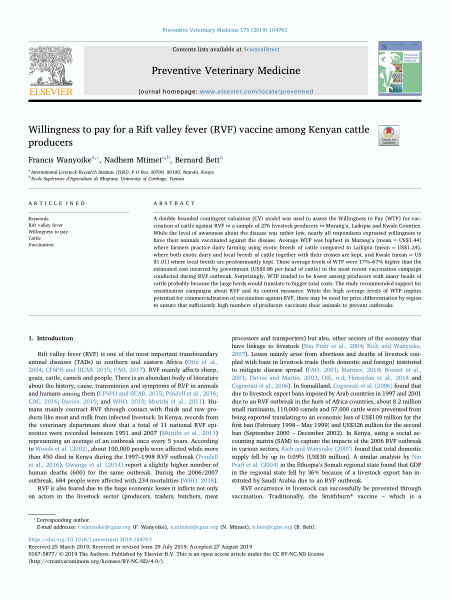Willingness to pay for a Rift Valley fever (RVF) vaccine among Kenyan cattle producers
Abstract
A double bounded contingent valuation (CV) model was used to assess the Willingness to Pay (WTP) for vaccination of cattle against RVF in a sample of 276 livestock producers in Murang’a, Laikipia and Kwale Counties. While the level of awareness about the disease was rather low, nearly all respondents expressed willingness to have their animals vaccinated against the disease. Average WTP was highest in Murang’a (mean = US$1.44) where farmers practice dairy farming using exotic breeds of cattle compared to Laikipia (mean = US$1.24), where both exotic dairy and local breeds of cattle together with their crosses are kept, and Kwale (mean = US$1.01) where local breeds are predominantly kept. These average levels of WTP were 17%–67% higher than the estimated cost incurred by government (US$0.86 per head of cattle) in the most recent vaccination campaign conducted during RVF outbreak. Surprisingly, WTP tended to be lower among producers with many heads of cattle probably because the large herds would translate to bigger total costs. The study recommended support for sensitization campaigns about RVF and its control measures. While the high average levels of WTP implies potential for commercialization of vaccination against RVF, there may be need for price differentiation by region to ensure that sufficiently high numbers of producers vaccinate their animals to prevent outbreaks.

